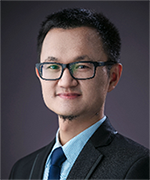Low-dimensional antimonide and optoelectronic devices
Date: 2023/09/14 - 2023/09/14
Academic Seminar: Low-dimensional antimonide and optoelectronic devices
Speaker: Zai-xing Yang, full professor of School of Physics at Shandong University
Time: 10:00-11:00 a.m., September 14, 2023 (Beijing Time)
Location: Room 414B, JI Long Bin Building
Abstract
Antimonide is considered as a new research frontier after the great success of III-V semiconductors such as arsenide, phosphide, and nitride. The United States, Japan, German and other developed countries are competing to carry out the relevant researches. Meanwhile, antimonide and devices have been listed as export blockade and monopoly technologies. Among antimonides, gallium antimonide (GaSb) has a band gap (0.72 eV) in the near-infrared band and the highest hole mobility (1000 cm2V-1s-1) among III-V semiconductors, which is considered as one of the ideal new channel materials for hole component to realize the next-generation high-performance infrared detectors and high-speed integrated circuits.
Low-dimensional semiconductor optoelectronic materials are the core of the research on next-generation information materials. The construction of one-dimensional GaSb nanowires, on the one hand, is able to develop the next-generation high-performance room temperature infrared detectors. On the other hand, it can fabricate the new integrated circuits. Many research groups are devoted to the development of high-performance GaSb nanowire optoelectronic devices. However, the performance of the devices is still confined to low hole mobility. First, the "surfactant effect" of the antimony element would cause serious disordered radial growth, resulting in uncontrollable diameter of GaSb nanowires, rich surface states and low mobility. Next, GaSb nanowires have rich crystal structures and different polarities., contributing to uncontrollable carrier scattering, carrier concentration and uniformity of mobility. In the end, the association between mobility and photodetection performance is still unknown experimentally. To solve these scientific difficulties, Zai-xing Yang conducts the researches based on "precisely controlling the surfactant effect of antimony element", "regulating carrier transport properties" and "regulating the surface state of nanowires" for a long term. In a word, he aims to solve the physical problems during the settlement of low-dimensionalizing antimonide into nanowire structures and strives to lead the development of a next-generation ultrafast infrared detection technology and high-speed integrated circuits.
Biography
 Zai-xing Yang is a full professor of School of Physics at Shandong University, China. He is Qilu Young Scholars of Shandong University, Outstanding Young Scholars of Shandong University, Young Experts of Taishan Scholars of Shandong Province, and Project Leader of National Key R&D Program. His research interest mainly focuses on the controlled fabrication of low-dimensional semiconductor nanostructures for electronic and optoelectronic device applications including field-effect- transistors, CMOS invertors, photodetectors, and photovoltaic devices. He has published 86 SCI papers so far, including Nat. Commun., PNAS, Nano Lett., ACS Nano, Adv. Funct. Mater., Mater. Today Phys., Small, Nano Res. and so on. He was invited to write 4 review papers and was authorized 9 invention patents.
Zai-xing Yang is a full professor of School of Physics at Shandong University, China. He is Qilu Young Scholars of Shandong University, Outstanding Young Scholars of Shandong University, Young Experts of Taishan Scholars of Shandong Province, and Project Leader of National Key R&D Program. His research interest mainly focuses on the controlled fabrication of low-dimensional semiconductor nanostructures for electronic and optoelectronic device applications including field-effect- transistors, CMOS invertors, photodetectors, and photovoltaic devices. He has published 86 SCI papers so far, including Nat. Commun., PNAS, Nano Lett., ACS Nano, Adv. Funct. Mater., Mater. Today Phys., Small, Nano Res. and so on. He was invited to write 4 review papers and was authorized 9 invention patents.
